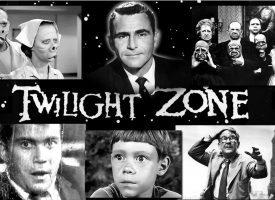With global markets on the move, today a legend in the business sent King World News a powerful piece warning that the biggest gamble in history by central banks has already resulted in massive losses.
From Art Cashin's notes: The Central Bank Contrast – My good friend and fellow market veteran at Cumberland Advisors has republished a piece by Alex Pollock, who is now at the AEI and was formerly President of the Federal Home Loan Bank of Chicago. The essay outlines some of the operations of the Swiss National Bank and contrasts it with the Fed. It is fascinating but a bit too big to cite in its entirety. Here's a bit to whet your appetite.
The Swiss National Bank (SNB) has just announced an eye-popping net loss for the first quarter of 2015: 30 billion Swiss francs, or $32 billion. A participant in its recent shareholders meeting shortly before the announcement told me “the directors looked very stressed.”
How does a money-printing central bank lose money? In this case, the SNB had 41 billion in losses on foreign exchange positions, primarily on its investments denominated in Euros. These were bought to try to hold down the appreciation of the Swiss franc against the Euro, which in the end didn’t work. The losses were partially offset by 10 billion in price gains on stocks and bonds in its portfolio. These were the dominating factors in the net loss of 30 billion.
Interestingly among smaller items, the income of the SNB includes 236 million in negative interest rates paid by depositors for holding deposits with it—a revenue source that American banks can only dream of.
The big loss is the result of marking assets to market—that is, using the most current market price, as opposed to “historical cost” accounting, which shows what you paid for an investment when you bought it, not what it is worth today.
In its published financial statements, the SNB is required by Swiss law to mark its investments, which include its large securities and gold holdings, to market. The resulting financial statements, the SNB formally declares, “present a true and fair view of the financial position.” No American firm has to come forth with such statements, nor does the Federal Reserve.
After booking the 30 billion quarterly loss, the SNB as of March 31 posted a net worth of 56 billion, compared to its 581 billion in total assets. This gives it a 9.7 percent capital to-assets ratio, after the big hit.
In dollars, the SNB’s capital is now $60 billion. This is somewhat larger than the capital of the Federal Reserve, which is $58 billion. The capital supports assets of $622 billion in the case of the SNB, but $4.5 trillion at the Fed, so the Fed’s capital ratio is a mere 1.3 percent, only 13 percent of the SNB’s.
Mr. Pollack then draws some eye-opening contrasts between the SNB and the Fed. Pull up the whole thing at David's blog.
Consensus – This morning's inflation and claims data could set the tone but the real question remains the "iron ceiling" and can the bulls pierce it. Could be a critical session. Stay wary, alert, and very, very nimble. ***ALSO JUST RELEASED: 5 Of The Most Stunning Charts Of 2015! CLICK HERE.
© 2015 by King World News®. All Rights Reserved. This material may not be published, broadcast, rewritten, or redistributed. However, linking directly to the blog page is permitted and encouraged.
The audio interviews with Chris Powell, Andrew Maguire, Rick Rule, Bill Fleckenstein, John Mauldin, Michael Pento, Gerald Celente, Egon von Greyerz, Dr. Paul Craig Roberts, James Turk, Dr. Philippa Malmgren, Eric Sprott, Robert Arnott, David Stockman, Marc Faber, Felix Zulauf, John Embry and Rick Santelli are available now and you can listen to them by CLICKING HERE.







